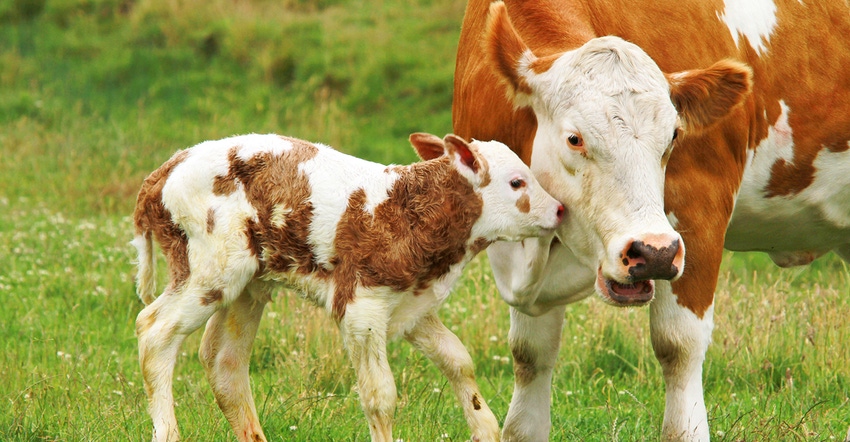March 27, 2019

By Amanda Cauffman
The profitability of the cow-calf enterprise is dependent on many factors, such as cow production, feed costs and the markets, but one big factor is the impact of overhead costs to the operation. I am sure you have heard that cow-calf enterprises do not handle a lot of overhead cost very well, but by evaluating financial records and using them to make better management decisions, we can better our chances for profit.
Overhead costs are the ongoing expenses of operating an enterprise. Overhead costs should not be confused with direct costs of operating on a day-to-day basis. As the number of cows in the enterprise increases, the direct costs additionally increase and the overhead costs stay the same. Overhead costs cover such things as housing, equipment, land, depreciation, interest, repairs, taxes and insurance. Overhead costs can be difficult to track, especially if there are multiple enterprises involved where a percentage of the overhead cost would have to be assigned to each enterprise. Keeping adequate and accurate financial records can help with this.
Keeping sufficient financial records can significantly impact decision-making ability. It is dangerous to use average costs when calculating net returns for the cow-calf enterprise. Data collected by the University of Minnesota’s Center for Farm Financial Management shows that in the years from 2008 to 2017, if the cow-calf enterprise wasn’t in the top 60% of farms for net returns, it experienced net losses eight out of eleven years. The data suggests that if you have an average net return each year, you will experience a profit loss more years than not. We need to strive to do better than average to ensure a profit.
Data collected by the Center for Farm Financial Management also shows the impact of overhead costs to the financial well-being of the enterprise. The data compares the gross return, direct costs, overhead costs and profits of the 20% least profitable, 20% most profitable and average profitability of 45 cow-calf enterprises in southeast and east-central Minnesota. The major factors that contributed the overhead cost for this data were equipment and building depreciation and interest. This means the least profitable 20% of cow-calf enterprises had new equipment and facilities and larger loans at the bank.

Minimize expenses
Equipment and interest can be big contributors to overhead costs. Sometimes as cow-calf producers, we can experience “iron fever,” where we feel the need to own more equipment than what we actually require for our enterprise. In making the decision to own a piece of equipment or to hire a job done by a custom outfit, you need to be able to evaluate the total ownership and operating costs of that specific piece of equipment as compared to the custom rate for the area. You may be able to hire it done for less than what you can do yourself. If you need to own equipment, you may need to diversify in enterprises or do custom hire yourself to spread out overhead costs.
Another way to spread out overhead costs is to better manage feed efficiency and space to be able to run more cows with the acres and facilities you have. Ensure that cows are doing their jobs in getting bred back within a 90-day window and weaning healthy calves with adequate growth. Identify cows that do not fit well with your management system, and sell or cull them, if necessary. The more calves you can produce, the more the overhead cost will be spread out over the cow-calf enterprise.
Overhead costs can have a large impact on the profitability of the cow-calf enterprise. Through knowing your financial status, you can make better management decisions and increase chances of landing with a profit.
Cauffman is the Extension educator in Grant County, Wis. This column is provided by the University of Wisconsin-Extension’s Wisconsin Beef Information Center.
You May Also Like




